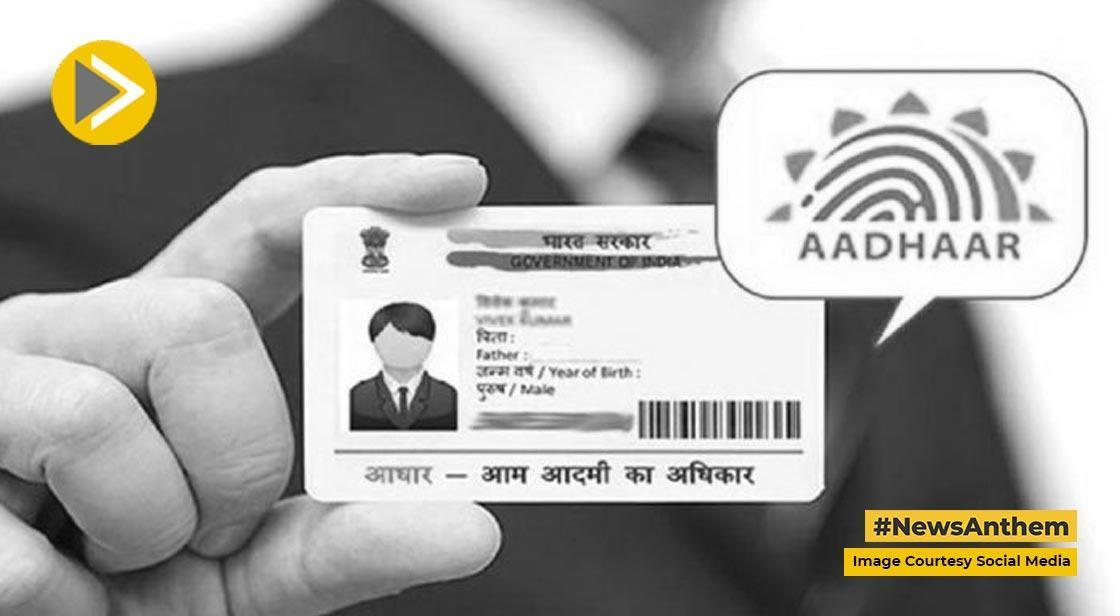UIDAI Reaches Milestone: Aadhaar Authentications Cross 150 Billion

News Synopsis
India's digital public infrastructure has reached a significant milestone, as the Unique Identification Authority of India (UIDAI) announced that Aadhaar authentication transactions have surpassed the 150 billion mark.
By the end of April 2025, a total of 15,011 crore authentications were recorded, signaling a growing trust and reliance on Aadhaar services across the country.
UIDAI stated, “Aadhaar-based authentication continues to play a crucial role in enabling the ease of living, strengthening welfare delivery mechanisms, and facilitating access to a wide range of voluntary services.”
Aadhaar Authentication Trends and Monthly Performance
April 2025 Witnesses 210 Crore Transactions
In just April 2025, Aadhaar saw 210 crore authentication transactions, reflecting an 8% rise compared to the same month in 2024. This rise indicates the growing dependence on Aadhaar for public and private service verifications.
e-KYC Services Witness Massive Growth
Digital KYC Process Gains Traction Across Sectors
UIDAI’s e-KYC (Electronic Know Your Customer) services have also seen significant growth. In April 2025, 37.3 crore e-KYC transactions were reported, representing a 39.7% jump from April 2024. The cumulative e-KYC transactions have now crossed 2,393 crore, underlining the increasing digitization of customer onboarding across sectors.
AI-Powered Face Authentication on the Rise
Contactless and Secure Verification Solutions Expand
UIDAI’s AI-based face authentication technology is gaining momentum. The in-house developed solution, powered by artificial intelligence (AI) and machine learning (ML), recorded around 14 crore face authentication transactions in April 2025. UIDAI noted that more than 100 government and private organisations are now utilizing this service for contactless and seamless verifications.
About Unique Identification Authority of India (UIDAI)
The Unique Identification Authority of India (UIDAI) is a statutory authority established by the Government of India on July 12, 2016, under the Ministry of Electronics and Information Technology (MeitY). This institution was set up in accordance with the Aadhaar (Targeted Delivery of Financial and Other Subsidies, Benefits, and Services) Act, 2016, commonly referred to as the Aadhaar Act 2016.
Prior to becoming a statutory authority, UIDAI operated as an attached office under the Planning Commission (now NITI Aayog) starting from January 2009.
Full Form: Unique Identification Authority of India
Objectives of UIDAI :
The primary purpose behind the establishment of UIDAI was to assign Unique Identification numbers, known as Aadhaar, to every resident of India.This unique number aims to:
-
Eliminate duplicate and fake identities.
-
Provide a verifiable and authenticable identity in an easy and cost-effective manner.
Functions of UIDAI:
Under the Aadhaar Act 2016, UIDAI is responsible for various key functions, including:
-
Aadhaar Enrolment: Developing the policies, procedures, and systems for issuing Aadhaar numbers to individuals. This involves collecting demographic and biometric data (fingerprints, iris scans, and photographs) from residents.
-
Aadhaar Authentication: Performing authentication and ensuring the security of identity information. UIDAI provides various authentication methods like biometric, demographic, and OTP-based authentication.
-
Operation and Management of Aadhaar Life Cycle: Managing all stages of the Aadhaar lifecycle, from enrolment to updation.
-
Aadhaar Database Maintenance: Maintaining the Aadhaar database, which is one of the world's largest biometric databases, and ensuring the uniqueness of Aadhaar numbers by avoiding data duplication.
-
Providing Online Verification: Ensuring stringent online authentication for privacy concerns and providing secure and efficient digital verification options.
-
Facilitating Aadhaar usage for various services: Enabling the use of Aadhaar as a proof of identity and address for government and private services, including Direct Benefit Transfer (DBT), opening bank accounts, and more.
-
Grievance Redressal: Addressing grievances and providing support to Aadhaar number holders.
-
Developing mechanisms for interlinking: Defining mechanisms for interlinking Aadhaar with other databases and services.
History and Key Milestones of UIDAI:
-
Early Discussions: The concept of a national identity card existed in various forms before Aadhaar.
-
In 2006, the project titled "Unique Identification for BPL Families" received approval, and a strategic vision document called "Strategic Vision: Unique Identification of Residents" was drafted.
-
In 2009, the Unique Identification Authority of India (UIDAI) was established as an attached office under the Planning Commission.
-
On September 29, 2010, the first Aadhaar number was issued to a resident in Nandurbar district, Maharashtra.
-
2016: The Aadhaar Act 2016 was enacted, establishing UIDAI as a statutory authority under MeitY.
-
Recent Achievements of UIDAI (as of May 2025):
-
UIDAI has generated over 138 crore Aadhaar numbers to the residents of India.
-
Aadhaar authentication transactions have crossed the 150 billion mark, highlighting its extensive usage in India's digital economy.
-
e-KYC transactions through Aadhaar saw a surge of nearly 40% in April 2025.
-
UIDAI's AI-driven face authentication is gaining traction, with over 14 crore transactions recorded.
-
In conclusion, the Unique Identification Authority of India (UIDAI) is a crucial government body responsible for the Aadhaar project, which provides a unique digital identity to residents of India. It plays a vital role in various aspects of governance, service delivery, and digital transformation in the country.
Conclusion
The steady rise in Aadhaar authentications, e-KYC usage, and AI-driven face verification points to the growing relevance of digital identity in India's governance and service delivery frameworks. With the UIDAI’s secure and scalable infrastructure, India is making great strides toward a more digitally inclusive future.
You May Like









